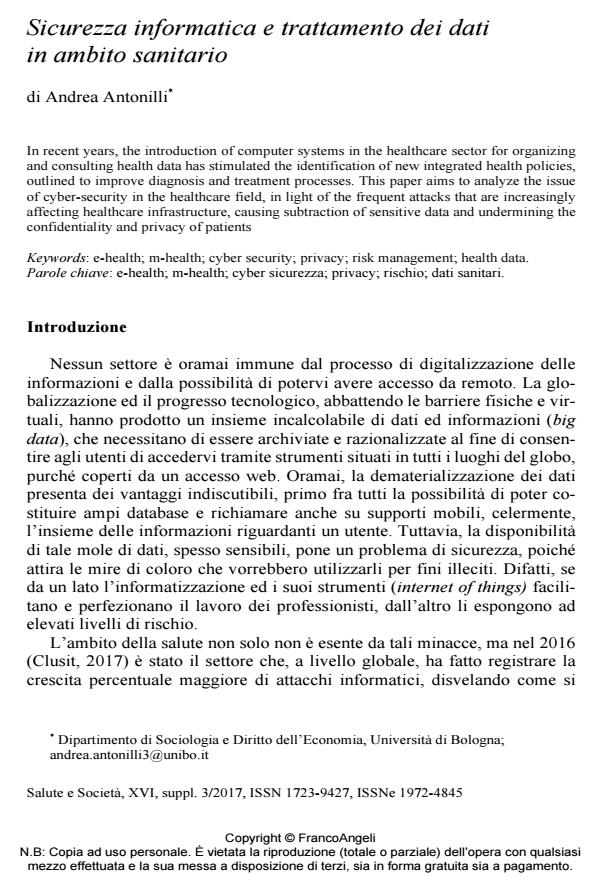Sicurezza informatica e trattamento dei dati in ambito sanitario
Journal title SALUTE E SOCIETÀ
Author/s Andrea Antonilli
Publishing Year 2017 Issue 2017/3-Suppl.
Language Italian Pages 17 P. 84-100 File size 105 KB
DOI 10.3280/SES2017-SU3006
DOI is like a bar code for intellectual property: to have more infomation
click here
Below, you can see the article first page
If you want to buy this article in PDF format, you can do it, following the instructions to buy download credits

FrancoAngeli is member of Publishers International Linking Association, Inc (PILA), a not-for-profit association which run the CrossRef service enabling links to and from online scholarly content.
In recent years, the introduction of computer systems in the healthcare sector for organizing and consulting health data has stimulated the identification of new integrated health policies, outlined to improve diagnosis and treatment processes. This paper aims to analyze the issue of cyber-security in the healthcare field, in light of the frequent attacks that are increasingly affecting healthcare infrastructure, causing subtraction of sensitive data and undermining the confidentiality and privacy of patients
Keywords: E-health; m-health; cyber security; privacy; risk management; health data.
Andrea Antonilli, Sicurezza informatica e trattamento dei dati in ambito sanitario in "SALUTE E SOCIETÀ" 3-Suppl./2017, pp 84-100, DOI: 10.3280/SES2017-SU3006